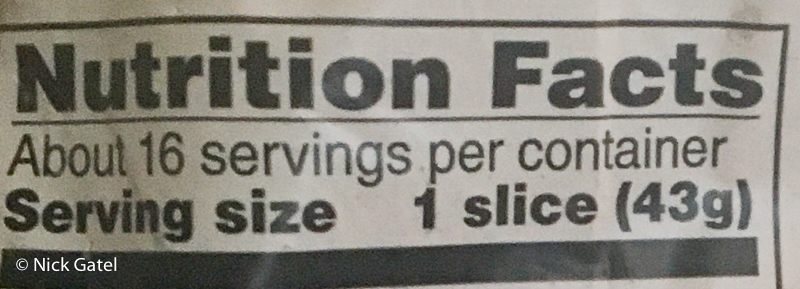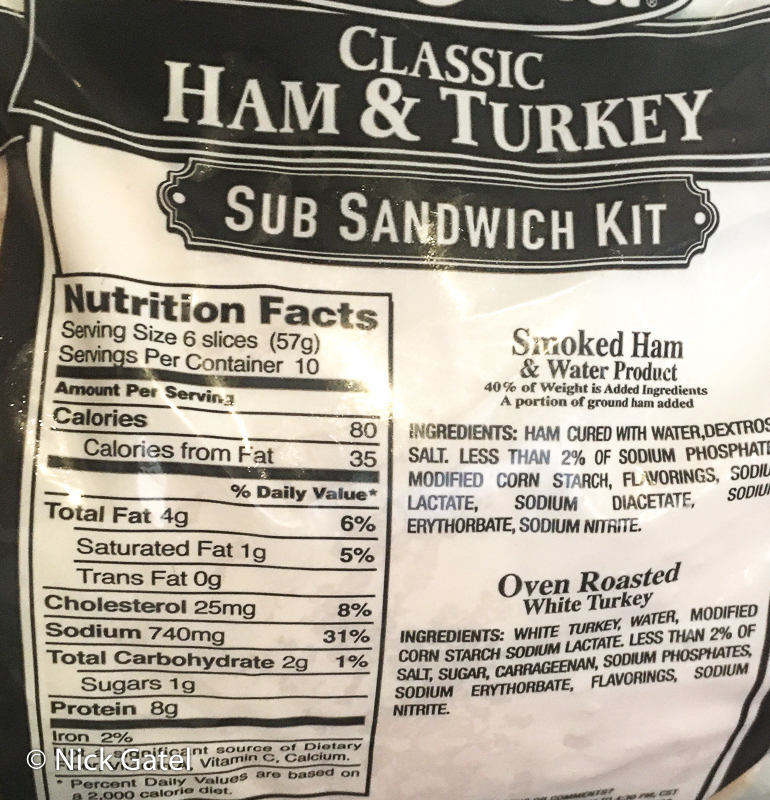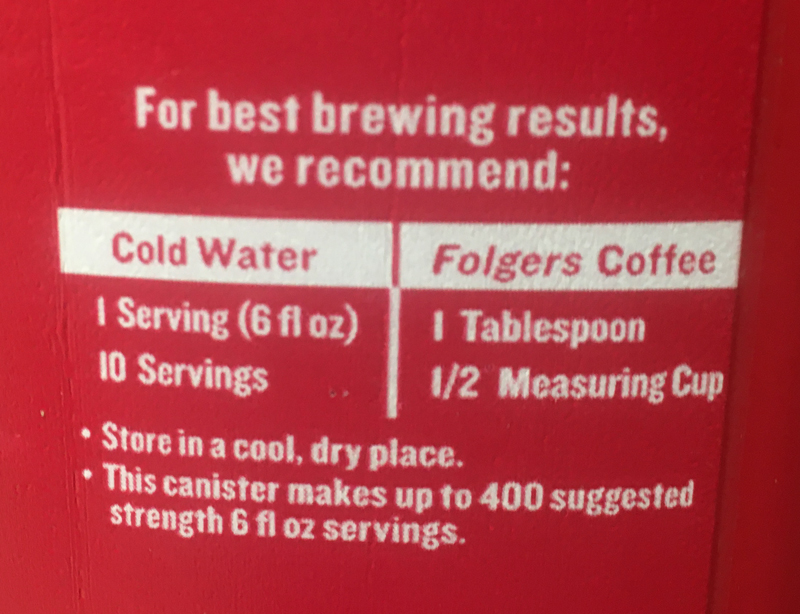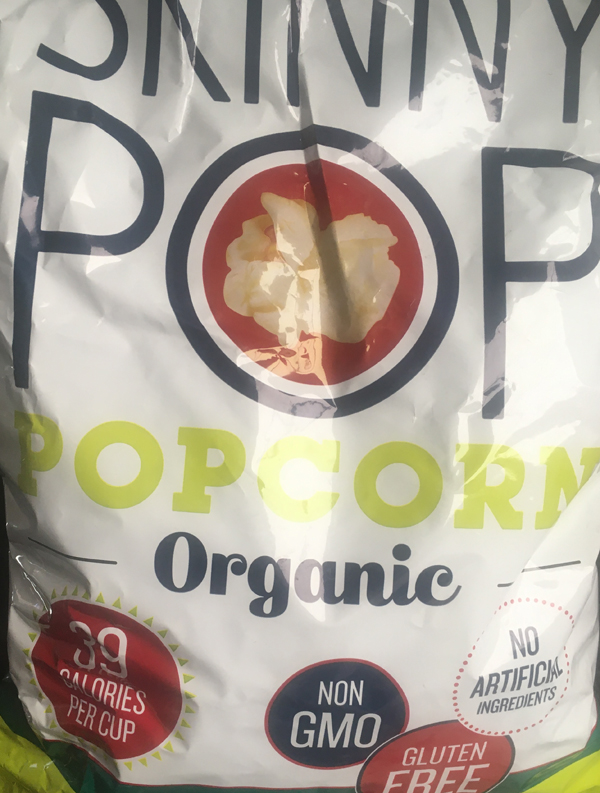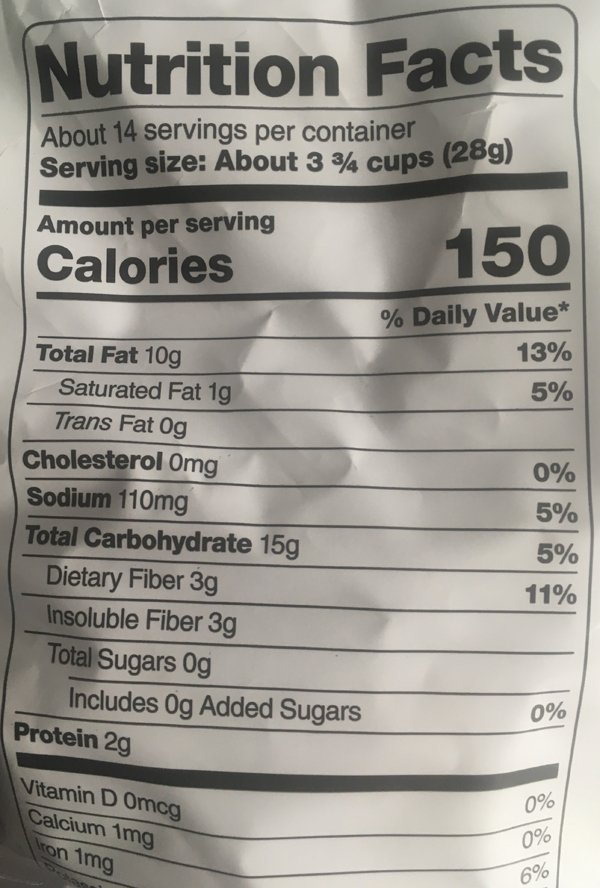What’s Up With That?
Last week we were camping. Daytime highs averaged around 115° F. In hot weather we don’t develop much of an appetite and decided that a simple sandwich and some watermelon would make the perfect dinners for the week.
Joyce made one mistake. She had me do the grocery shopping, even though she knows I am a shopping amateur and basically an incompetent shopper.
To keep me from making poor food choices, she made a shopping list so I wouldn’t screw up.
While shopping, I looked at the nutrition labels to make sure I bought healthy food — only problem being is I have no idea what healthy food is.
The first item was wheat bread. That should be simple.
Bread
Oh, my! There were so many brands of wheat bread on the shelves. Given a plethora of choices, it only made sense to buy the cheapest loaf. I picked it up and looked at the “Nutrition Facts” label.
One slice was the serving size.
When I was a kid, we called the long loaves of bread that were sliced, sandwich bread. Why? Because almost every single person in this country makes sandwiches from the bread, and a sandwich is two slices of bread with something in the middle.
Anyway you slice it, whether the center contains peanut butter, jelly, cheese, or meat, two slices is required to make the standard sandwich. So why did the bread company state one slice is the serving size? Perhaps to fool consumers? Well consumers are pretty stupid sometimes, so maybe this works.
Even if you use slices of bread to make toast, most people consume two slices of toast at breakfast. In a restaurant, if you order toast with your breakfast, you will be served two slices of toasted bread.
I looked at the nutritional labels on almost every brand of wheat bread on the shelf and they all said one slice is the serving size. Must be some sort of socialist-communist plot against us Americans. Oh, well, it was time to move on and purchase the rest of the items on the list. Next stop was luncheon meat.
Luncheon Meat
I had been instructed to buy a “variety pack” of luncheon meat. The meat section of the store, where such items are usually displayed was empty, except for three packages of ham and turkey. This is probably due to the COVID pandemic. Even thought it was late July, many of the shelves in all departments were somewhat sparse of inventory. As humans, we adapt.
My instinct was to forget about the monumental difficulty in purchasing sandwich components, and just buy a salami sausage and no bread, and call it a day. Joyce in her infinite wisdom and understanding of the male psyche had told me not to buy any salami, pepperoni sausage, or beef stick. Drat!
Produce
Okay, I had bread and meat. On to the produce department to select lettuce and a watermelon. So many choices for lettuce. Iceberg, Romaine, and several others whose names I can’t remember. Organic or non-organic. What the hell is organic anyway? They all grow in the ground.
So I bought the cheapest, which was a head of iceberg. Not many choices for watermelon. So I thumped a few, not knowing what good that would do, but I see Joyce do that when she buys watermelon. Note to self: tell Joyce I need watermelon selection training.
Now I was really confused. The lettuce and watermelon do not have nutrition labels on them. How are we supposed to know how much to use? Bread is pretty simple. Most people eat one sandwich. Some eat two. How much lettuce should be in a sandwich?
Coffee
We also needed coffee. Coffee used to be simple. Just by the cheapest, and most cans held two or three pounds of coffee. Today there are several different sizes of coffee containers and none are exactly one, two, or three pounds. The shapes are odd and made from plastic. I suspect this is to camouflage the fact the prices have been raised and the old standard quantities decreased. The coffee containers I looked at did not have nutrition labels. They did have serving size information. I bought a can that provides 400 servings of coffee. That sounds like a lot and it was on sale.
But wait! A serving size is 6 ounces. Who drinks a 6-ounce cup of coffee? Lilliputians or Hobbits perhaps?
It was the largest container sold, weighing 51 ounces (3 lb. 3 oz.). Why 51 ounces and not 48, which would be exactly 3 pounds?
Diet Pepsi
Last item on the list was Diet Pepsi. The shelves were pretty sparse and not much selection for Diet Pepsi in cans. The best deal was for 6 packs of 16.9 ounce plastic bottles.
A can of Diet Pepsi was 12 ounces and the label said 1 can = 1 serving.
A bottle of 16.9 ounce Diet Pepsi had a label that said 1 bottle = 1 serving.
It is the same product, but why do the serving sizes vary? So we have beverage-serving sizes that vary from 6 to 16.9 ounces. I thought a serving size might be 8 ounces because that is how much fluid is in a measuring cup. It is the definition: 1 US Cup = 8 Us ounces. It an official measurement set by the Weights and Measures Division of the National Institute of Standards and Technology.
And why does Pepsi sell a 16.9-ounce beverage? I know that 16.9 ounces is 500 fluid milliliters, but there was no mention of that size on the bottle.
So, I chose the 6 packs of bottles that were on sale.
Digital Coupons in Our Modern Age
Then I noticed the sale price required redemption of a digital coupon. Sigh! What on earth is a digital coupon? Making sure my face mask was secure; I sought out a store employee. Turns out that to get a digital coupon I would have to download an app on my phone. You got to be kidding. Cell reception was down to one bar in the store and I could not download the app. The store had free Wi-Fi, which was so slow that I couldn’t download it that way either. Good news is the cashier gave me the sale price anyway.
An Unauthorized Purchase
On a whim, and with complete unsupervised abandon, I decided to buy some popcorn.
The name was encouraging: Skinny Popcorn. And it has no GMO or Gluten. Only problem here is that I don’t know what GMO or Gluten are. But it sounds healthy. Plus, there are no artificial ingredients. Oh, and there is that organic thing again. The popcorn is organic. Joyce says organic food is the best. I still don’t know what that means. I don’t think we grow popcorn in the dirt.
Best yet, it only has 39 calories per cup!
Nutrition Label
Well, the popcorn may only have 39 calories per cup, but the serving size in 3.75 cups or 28 grams. We don’t have anything in the camper to really measure 3.75 cups and we don’t have a scale in the camper either.
It did say there were 14 servings per bag. Late the first night at camp, and we probably ate about half of the bag or 3.5 servings each. That’s assuming we ate equal amounts. So we probably ate at least 500 calories each.
Gosh, this is too difficult.
Now you know why I hate shopping these days.
By the way, Joyce was okay with me buying the popcorn, which was not on her list.
Our Food in Action
The first night at camp, Joyce cut up the watermelon and made each of us a sandwich. I asked how many slices of meat she put in each sandwich.
“Four,” she said.
“But the package says six slices,” I pointed out.
“That would be too much.”
“But according to the nutrition labels, you should have put 6 slices on a single slice of bread. That means you would have to cut each slice in half first.”
Looking at me with irritation, she said, “Sandwiches consist of two slices of bread. Six is too much for a sandwich, and who makes a sandwich out of one slice of bread? That is why you shouldn’t read the labels.”
That was a relief because I had been concerned I had not shopped well.
Epilogue
When I got home from our trip, I searched online to see why bread has a one slice serving size.
It seems the Food and Drug Administration regulates the stated serving size. How’s that for governmental overreach? I won’t delve into the details, but this link will explain it.
I cannot vouch for the accuracy of the article either.

